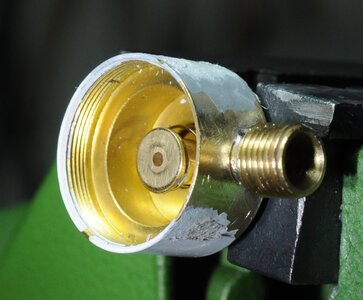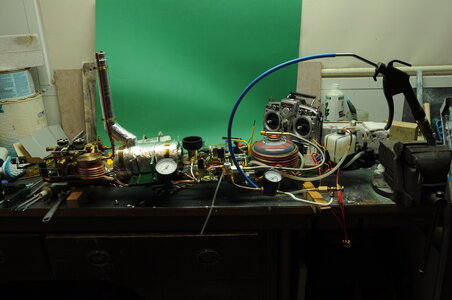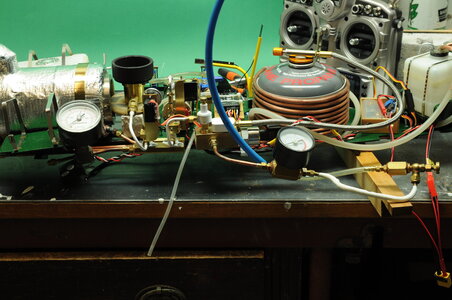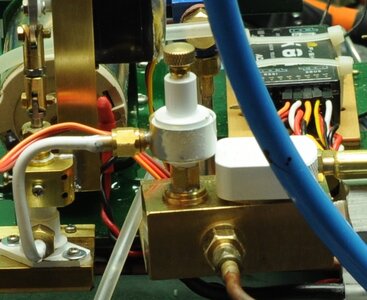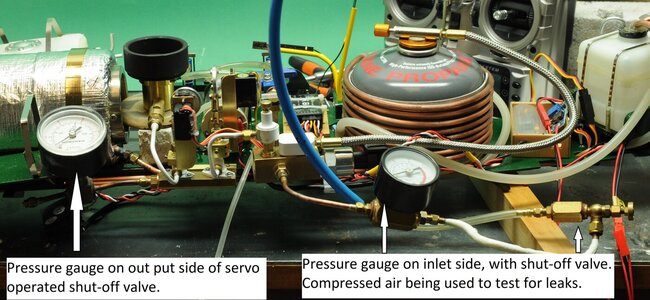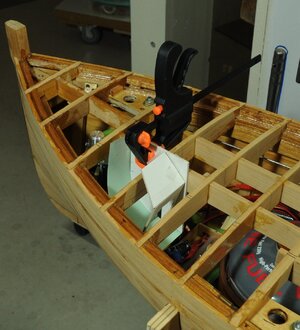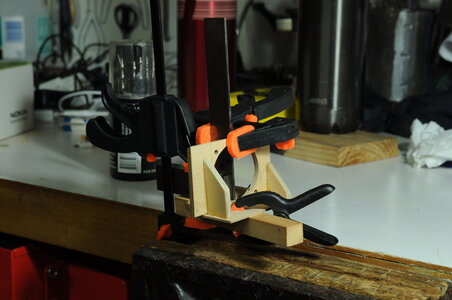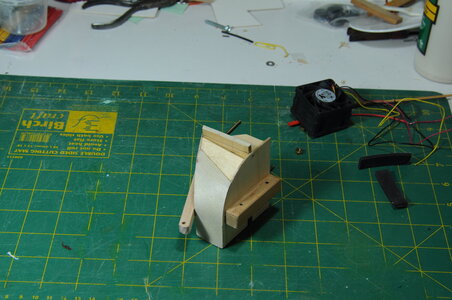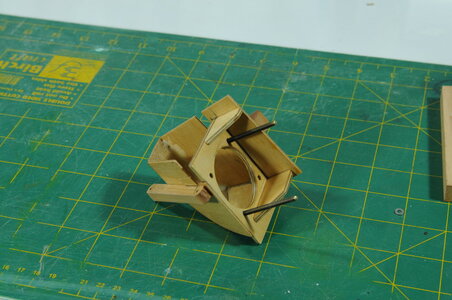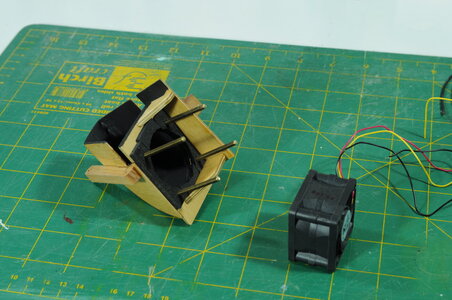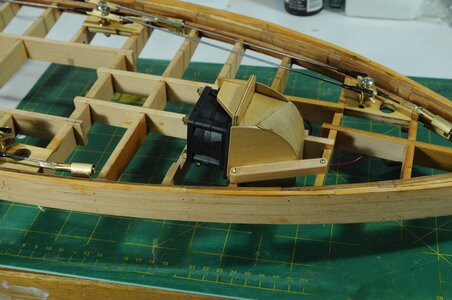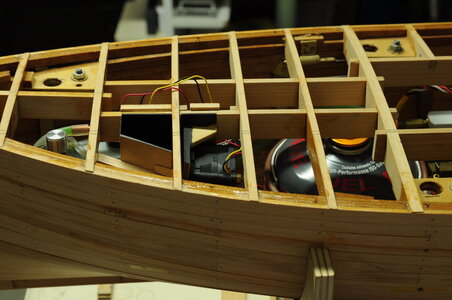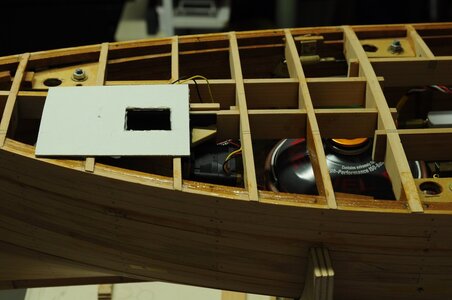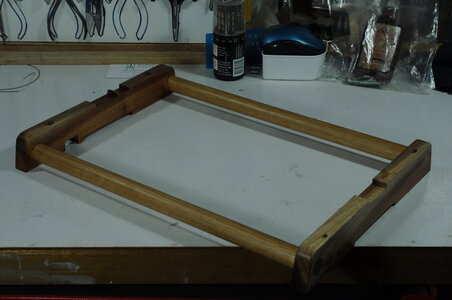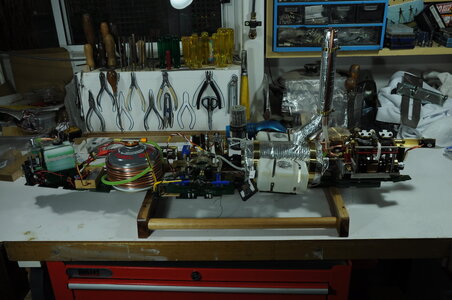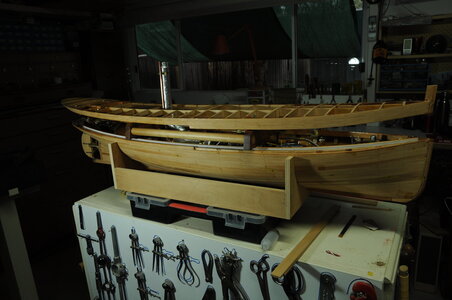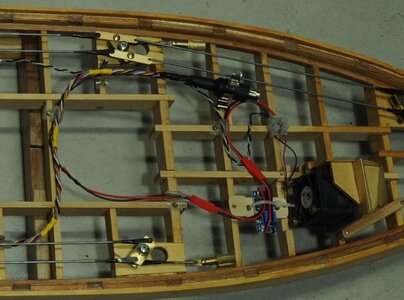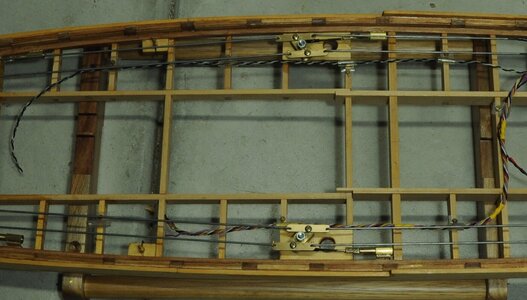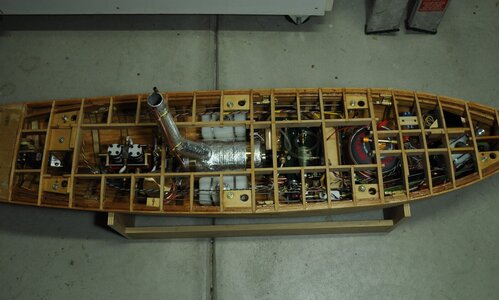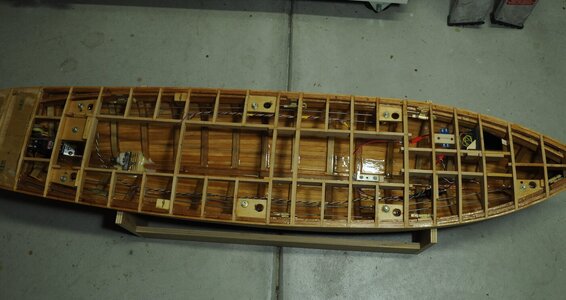Part 18.
Testing of steam plant!!
I started testing and rectifying problems and it still continues, both my feed pumps decided they didn't want to work after sitting for quite a while, I discovered that both of the inlet check valves (3mm balls) were sticking / jamming in their housings so I changed them to 1/8" balls problem fixed. Unfortunately it does my head in when I run into problems, in my head it should just work!!!
This is something that is improving as I get older, I am now less likely to throw my hands in the air so to speak.
Then on testing for gas leaks using compressed air I found that the gas regulator I bought didn't have the output fitting soldered on properly and was leaking quite a bit.
View attachment 203121View attachment 203122View attachment 203123
I have now soft soldered the leak.
View attachment 203124View attachment 203125
Then the output from my gas shutoff valve would not seal and after many headaches later I made a new output fitting machined off most of the old on then soft soldered the new one on problem fixed, looks like the guy in quality inspection was asleep on the job.
As testing progressed the gas metering and shutoff valve's work a treat. I didn't find out there was a problem with the gas shutoff output until I lit the burner and after a minute I had flames where I didn't want flames. This was quite alarming though all was under control after flicking the switch on the transmitter that closes the shut off valve.
A few days later things didn't improve much when I tried to run the steam plant (I went out with the expectation everything would work, this being the main problem) and nothing seemed to work apart from feed pumps and gas valves that is.
I tried lighting the new burner that was now in it’s correct place for the first time and it would not run when inside the generator ( I have probably made the flue diameter too small, I did think of a temporary fan to induce a draft through the generator, though I didn’t try it ) when I got it to run by removing the bush that centralises it in the generator it didn't seem to do much. Not happy!!!
I went inside for a while to settle down and start to think about what had happened.
I thought I would try the old Cheddar steam burner ( I had made up pipe work to try it anyway) what a difference things started to happen, I discovered that I had filled the entire system with water including the engine which I think sort of hydraulic’ed and locked up I had hot water coming out all over the place and not much else happening.
I was ready to give the whole thing up and either buy a commercial steam engine or just put an electric motor in and be done with it. To say I felt dejected would be an understatement. I went back inside again. I even had a look at a beautiful Martin Baylis Engineering twin slide valve engine, I hate to think how much one of those is….
Once I started to rationalise the whole thing I started to calm down, I decided that next morning I would run the engine on compressed air first to prove that it would run.
So next morning I hooked compressed air up to my engine and it ran, I found that the main leaks were from the forward/reverse valve, I removed it then pulled it apart flattened both faces reassembled and ran with compressed air, the engine seemed to run well.
I changed the feed pump curve on the transmitter and halving the feed pump max speed to reduce water flow.
I tried running the plant again and to my joy it ran, still pumping too much water though. It has run several times now still reducing the amount of feed water.
There is still more to do on the plant, like adding temperature sensors to monitor steam temperature and maybe ambient inside temperature.
Here are a couple of short videos showing running the plant, I hope the links work.

drive.google.com

drive.google.com
Thanks for looking in comments/questions are welcome and Happy New Year to all the crew at SOS.
Cheers,
Stephen.






